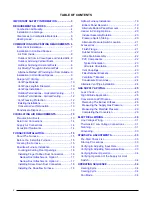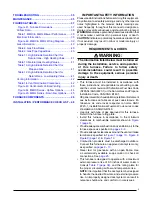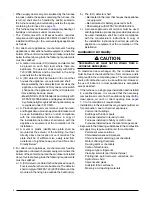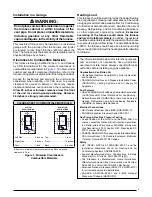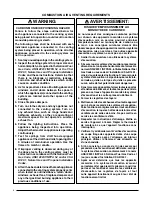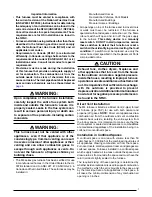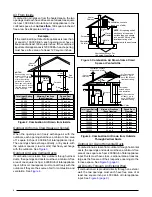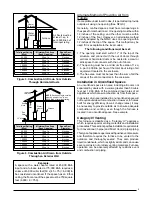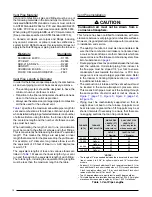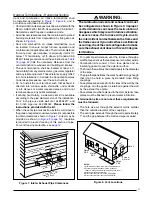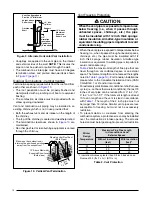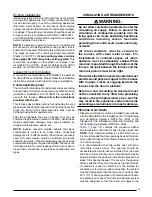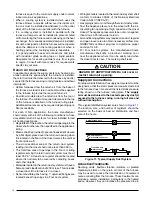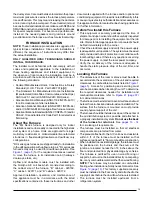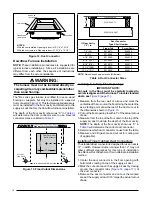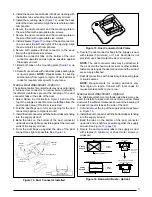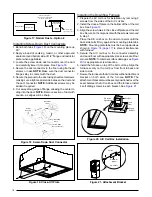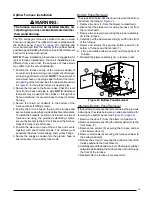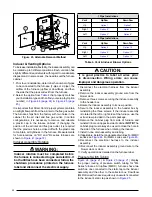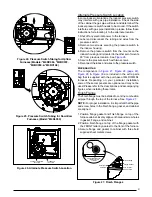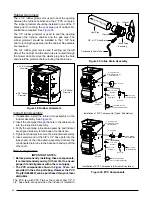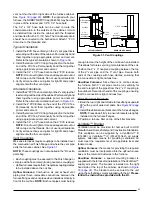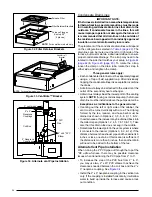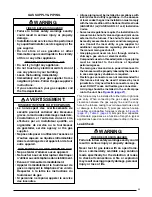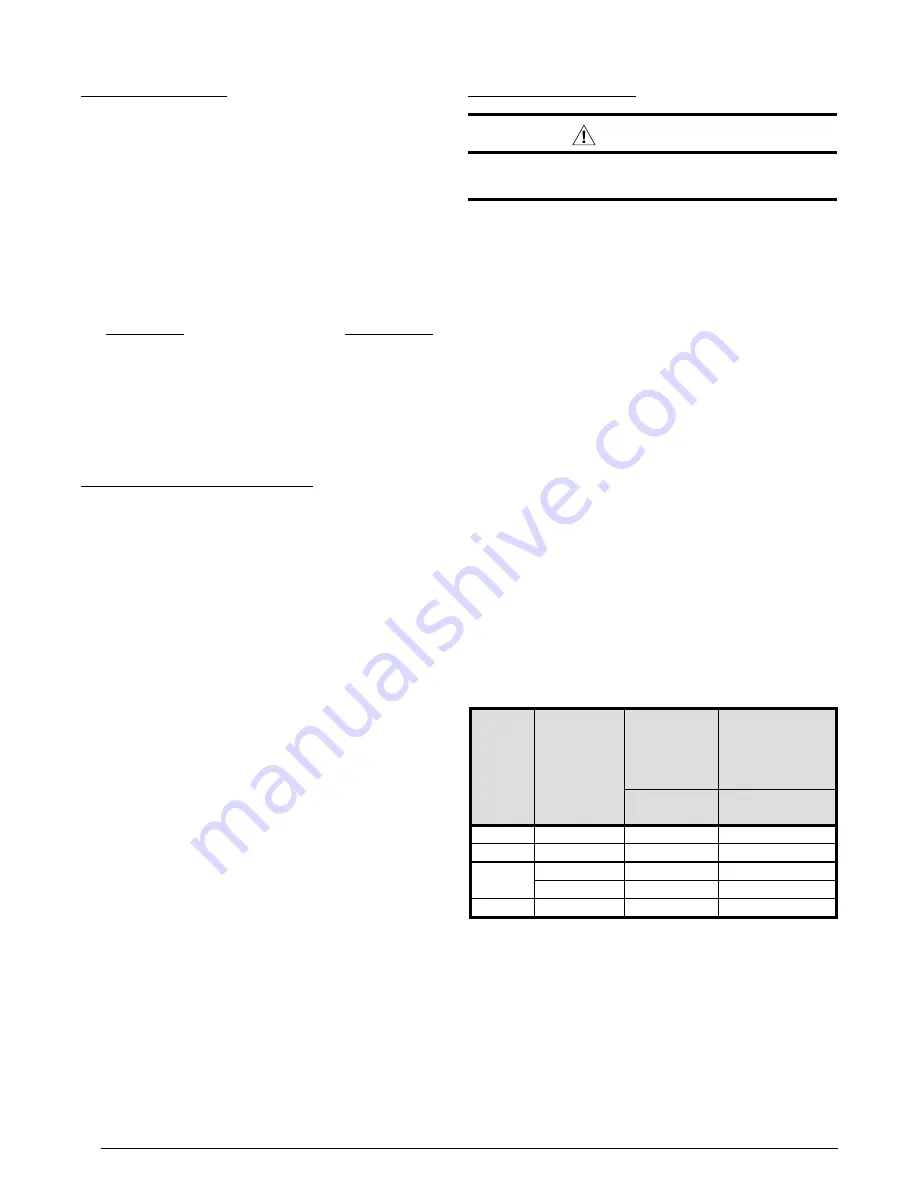
10
Table 1
Vent Pipe Material
Vent and combustion air pipe and fittings must be one of
the following materials in the list and must conform to the
indicated ANSI/ASTM standards. Cement must conform
to ASTM Standard D2564 for PVC and Standard D2235
for ABS. PVC Primer must meet standard ASTM F656.
When joining PVC piping to ABS, use PVC solvent cement.
(See procedure specified in ASTM Standard D3138).
In Canada, all plastic vent pipes and fittings including
any cement, cleaners, or primers must be certified as a
system to ULC S636. However, this requirement does not
apply to the finish flanges or piping internal to the furnace.
FURNACE
(BTU)
FURNACE
INSTALLATION
SINGLE PIPE
LENGTH (FT.)
with 1 long
radius elbow
†
DUAL VENT PIPE
LENGTH (FT.)
with 1 long radius
elbow on each pipe
†
OUTLET
3” Diameter
INLET/OUTLET
3” Diameter
54,000
Upflow
90
90
72,000
Upflow
90
90
90,000
Upflow
90
90
Downflow
90
90
108,000
Upflow
90
90
†
NOTES:
• The length of 2” pipe needed between the inducer and the exit hole
(top of cabinet) is 8 3/4” for upflow models and 16” for downflow
models.
• Subtract 2.5 ft. for each additional 2 inch long radius elbow, 5 ft. for
each additional 2 inch short radius elbow, 3.5 ft. for each additional
3 inch long radius elbow, and 7 ft. for each additional 3 inch short
radius elbow. Subtract 8ft for each 3” tee.
• Two 45 degree elbows are equivalent to one 90 degree elbow.
• This table applies for elevations from sea level to 2,000 ft. For higher
elevations, decrease pipe lengths by 8% per 1,000 ft of altitude.
Table 1. Vent Pipe Lengths
Materials
Standards
SCHEDULE 40PVC ............................... D1785
PVC-DWV .............................................. D2665
SDR-21 & SDR-26 ................................. D2241
ABS-DWV .............................................. D2661
SCHEDULE 40 ABS .............................. F628
FOAM / CELLULAR CORE PVC ........... F891
Vent Pipe Installation
CAUTION:
Combustion air must not be drawn from a
corrosive atmosphere.
This furnace has been certified for installation with zero
clearance between vent piping and combustible surfaces.
However, it is good practice to allow space for convenience
in installation and service.
• The quality of outdoor air must also be considered. Be
sure that the combustion air intake is not located near
a source of solvent fumes or other chemicals which can
cause corrosion of the furnace combustion system. See
list of substances on
.
• Route piping as direct as possible between the furnace
and the outdoors. Horizontal piping from inducer to
the flue pipe must be sloped 1/4” per foot to ensure
condensate flows towards the drain tee or PVC trap.
Longer vent runs require larger pipe diameters. Refer
to the Inducer & Venting Options section on
for additional information..
• The combustion air intake and the vent exhaust must
be located in the same atmospheric pressure zone.
This means both pipes must exit the building through
the same portion of exterior wall or roof as shown in
,
&
.
• Piping must be mechanically supported so that its
weight does not bear on the furnace. Supports must
be at intervals no greater than 5 ft. Supports may be at
shorter intervals if necessary to ensure that there are
no sagging sections that can trap condensate.
Vent Pipe Length & Diameter
In order for the furnace to operate properly, the combustion
air and vent piping must not be excessively restrictive.
• The venting system should be designed to have the
minimum number of elbows or turns.
• Transition to the final vent diameter should be done as
close to the furnace outlet as practical.
• Always use the same size or a larger pipe for combustion
air that is used for the exhaust vent.
specifies the maximum allowable pipe length for
vent and combustion air for a furnace of known input rate,
when installed with piping of selected diameter and number
of elbows. Before using the table, the furnace input rate,
the centerline length and the number of elbows on each
pipe must be known.
When estimating the length of vent runs, consideration
must be made to the effect of elbows and other fittings.
This is conveniently handled using the idea of “equivalent
length”. This means the fittings are assigned a linear
length that accounts for the pressure drop they will cause.
For example: a 2” diameter, long radius elbow is worth
the equivalent of 2.5 feet of linear run. A 90 degree tee
is worth 7 ft.
The equivalent lengths of tees and various elbows are
listed in
. Measure the linear length of your vent
run and then add in the equivalent length of each fitting.
The total length, including the equivalent fitting lengths,
must be less than the maximum length in the table.
Summary of Contents for M4RC-072D-35C
Page 47: ...47...


